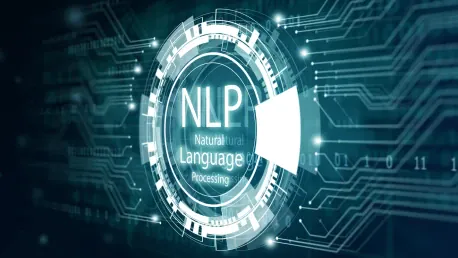The necessity of language in both human and artificial thought processes is a fundamental question that has intrigued scientists and researchers alike. While human cognition often relies heavily on language, some neuroscientists argue that linguistic structures can sometimes hamper reasoning efficiency by requiring the conversion of abstract ideas into words. This raises a pivotal question in the realm of artificial intelligence: could AI models improve their reasoning capabilities by bypassing linguistic structures altogether? This article delves into the exploration of advancing AI by examining whether models can reason and process information more efficiently through the elimination of language barriers.
Investigating Mathematical Foundations
Understanding Latent Spaces
Large Language Models (LLMs) such as GPT-2 utilize deep neural networks that operate within intricate mathematical realms known as latent spaces. These networks are designed to process sequences of numbers rather than directly engaging with words. During operation, text is converted into what is known as tokens, which then undergo transformation into numerical embeddings. These embeddings are subsequently processed within the network’s architecture and eventually reverted back into tokens to generate outputs. This conversion process effectively allows the model to engage with language. However, this repetitive process of converting text to tokens and back can be highly computationally intensive and may lead to the inadvertent loss of information, similar to the degradation seen when an image is digitized repeatedly.
Token Conversion Challenges
The continuous back-and-forth conversion between tokens and latent mathematical representations poses significant challenges in terms of computational efficiency and accuracy. Given the complexity of deep neural networks, each token conversion demands substantial computational resources, which can significantly slow down processing speeds and limit the model’s capacity to handle large-scale data efficiently. Furthermore, the conversion process may introduce noise and imperfections, causing the model to lose fidelity in the data it processes, much like an image loses clarity with repeated digitization. Consequently, researchers are keen on exploring alternative methods to streamline AI reasoning by minimizing or altogether eliminating the need for constant token conversions. By optimizing operations within continuous mathematical spaces, they aim to enhance both the efficiency and accuracy of these advanced AI models.
Minimizing Token Dependence
Reducing Conversion Steps
Efforts to reduce the reliance on frequent token conversions have led researchers to investigate new methodologies that optimize AI performance. One promising approach suggests maintaining operations primarily within continuous mathematical spaces, thereby minimizing the need to revert to language tokens. Advocates of this approach argue that by reducing the frequency of token conversions, AI models can operate more efficiently and accurately. This line of inquiry aligns with the growing consensus that linguistic mediation may indeed hamper the reasoning process in AI models, much like in human cognition. As a result, maintaining a continuous mathematical flow could potentially alleviate these inefficiencies, enhancing the model’s capabilities significantly.
New Perspectives in Research
Recent innovative studies propose groundbreaking ideas that challenge traditional practices of AI model development. These studies suggest that AI models might reason more effectively if they predominantly operate within latent spaces, circumventing the constant mediation via language tokens. This perspective introduces a paradigm shift in AI research, wherein the focus transitions from linguistic processing to mathematical reasoning. The implications of this shift are profound, presenting the possibility for AI models to achieve superior performance and accuracy by eschewing conventional linguistic limitations. These pioneering studies not only propose novel methodologies but also pave the way for a transformative approach to AI model construction, setting the stage for future advancements in the field.
Key Research Developments
Coconut Model by Meta
One of the notable key developments in this area is the Coconut model, developed by a team led by graduate student Shibo Hao at Meta. Hao and his team aimed to construct an LLM that reasoned predominantly within latent space, thereby avoiding frequent token conversions. The concept behind Coconut was to loop the hidden state generated by the final transformer layer directly back into input embeddings, thus maintaining the reasoning process within the continuous mathematical space. By keeping operations within this realm, Coconut could theoretically streamline processing and enhance reasoning efficiency. Initial tests and evaluations of Coconut showed promising outcomes, particularly in logical reasoning tasks where the model outperformed its predecessor, GPT-2. Notably, Coconut achieved superior accuracy while utilizing significantly fewer tokens, showcasing its efficiency in handling complex reasoning tasks without frequent recourse to language tokens.
Performance and Efficiency
The performance metrics of Coconut further underscore its potential as an innovative AI model. In logical reasoning tasks, Coconut demonstrated 98.8% accuracy, utilizing approximately one-tenth the number of tokens that GPT-2 required. This efficiency gain illustrates the advantages of reasoning within latent space and highlights the model’s proficiency in accomplishing tasks with reduced computational overhead. However, the model’s performance in elementary math problems revealed some limitations. Coconut achieved a 34% accuracy rate, compared to 43% by GPT-2, indicating that while it excelled in logical reasoning, it required further training in latent space reasoning to tackle mathematical tasks effectively. These findings suggest that initiating training from within the latent space could potentially enhance accuracy in diverse problem-solving scenarios, heralding a new direction in AI model development.
Recurrent Transformer Model Insights
Adaptive Reasoning Mechanism
Another significant advancement in latent space reasoning is presented by Tom Goldstein’s team at the University of Maryland. Goldstein and his team developed a recurrent transformer model with an impressive 3.5 billion parameters, designed to dynamically determine when to switch back to language processing. Unlike fixed iteration models, this sophisticated transformer model allocates multiple passes through its layers as necessitated by the complexity of the task. During training, the model adapted to the demands of various problem types, learning to use more resources for intricate tasks and fewer for simpler ones. This adaptability is crucial, as it allows the model to optimize resource allocation and processing efficiency based on the requirements of each specific task. Such adaptive reasoning enhances the model’s effectiveness, positioning it as a powerful tool for diverse applications in AI.
Exceptional Results
The recurrent transformer model developed by Goldstein’s team exhibited outstanding performance across a range of reasoning tasks, significantly surpassing first-generation LLMs such as OLMo models from the Allen Institute for AI. In particular, the model achieved 28% accuracy on elementary math problems, a marked improvement over OLMo’s 4% accuracy. This remarkable performance can be attributed to the model’s ability to vary the number of layer passes based on task complexity, exhibiting emergent behavior akin to adaptive learning. For instance, the model allocated more passes for moral reasoning tasks, which require nuanced understanding and judgment, while utilizing fewer passes for straightforward high school math problems. Such fine-tuned processing underscores the potential of recurrent transformer models to revolutionize AI reasoning, leveraging latent space operations to optimize problem-solving capabilities comprehensively.
Long-Term Considerations
Efficiency and Accuracy Gains
The promising results from both the Coconut model and the recurrent transformer model indicate that reasoning within latent space can yield considerable improvements in efficiency and accuracy for AI models. By minimizing token dependence, these models have demonstrated superior performance in critical reasoning tasks, often utilizing fewer tokens without compromising accuracy. This breakthrough approach not only enhances computational efficiency but also opens up new paradigms for AI research and development. As the field progresses, further refinement of these models could lead to even more significant gains, making latent space reasoning a vital aspect of future AI technologies.
Challenges to Adoption
Despite the exciting prospects, transitioning existing LLM architectures to latent space reasoning poses substantial challenges. Leading AI companies, such as OpenAI and Anthropic, have made significant investments in current token-based models, embedding these architectures deeply into their operational frameworks. Consequently, shifting to latent space reasoning would require extensive reengineering and possible overhauling of existing systems. This transition involves not only technical adjustments but also a thorough evaluation to ensure compatibility and integration with established methods. Moreover, the funding and resources required for such a transformation could be substantial, posing another barrier to widespread adoption of latent space reasoning models. Thus, the implementation of these innovations into mainstream AI applications necessitates collaborative efforts and long-term strategic planning to navigate the complexities of this paradigm shift effectively.
Human Cognition Alignment
Another critical consideration in the integration of latent space reasoning models is their alignment with human cognition patterns. Current LLMs, trained with text data, inherently mirror aspects of human thought processes, ensuring a degree of familiarity and intuitive understanding. However, continuous space reasoning models, with their predominant focus on mathematical representations, might diverge from these cognitive parallels. This deviation could potentially complicate the interpretation and control of AI models, as their reasoning mechanisms may no longer align tightly with human logic. Researchers and developers must carefully evaluate the implications of these variations, ensuring that newly developed models maintain a relatable and comprehensible framework for users.
Future Outlook
The question of whether language is essential in human and artificial thought processes has captivated scientists and researchers for years. While human cognition often depends on language, some neuroscientists suggest that linguistic structures can sometimes impede reasoning efficiency because converting abstract ideas into words can be cumbersome. This idea brings up an important issue in the field of artificial intelligence: could AI models enhance their reasoning abilities by avoiding linguistic structures altogether?
This article explores the potential for advancing AI by investigating whether these models can reason and process information more effectively without the constraints of language. By examining how AI can bypass the traditional linguistic barriers, researchers hope to unlock new levels of efficiency and capability in artificial intelligence systems. The article also considers the implications of such advancements, particularly in how AI could handle complex tasks and abstract problem-solving without relying on traditional language-based approaches. This examination offers a glimpse into a future where AI could operate with a new kind of cognitive agility, potentially transforming how artificial intelligence interacts with and adapts to our world.









